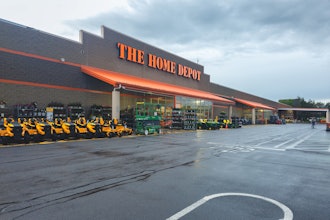The Executive Edge leadership track brings together business executives and top leaders in environmental, health and safety (EHS) management. Top decision-makers are increasingly discovering that well-integrated EHS management systems create worldclass organizations with competitive advantage and business sustainability. Dynamic dialogues, cross-sharing among leaders, and interactive workshops aim to sharpen leadership skills and capture leading evidence-based solutions for successfully integrating EHS into business operations. Panelists share why and how their organizations continue to invest resources in strengthening and integrating their EHS system as well as discussing key factors that are critical in achieving EHS excellence while sharpening an organization’s competitive edge. Influencing other decision-makers to shift from a mindset of compliance to one of excellence is also addressed.
Interviewer:
William Bozzo — Vice President & Director, Environmental Safety and Health - DynMcDermott Petroleum Operations
Panelists:
Joseph J. Angello — Director, Readiness Programming and Assessment - U.S. Department of Defense
William R. Williams — Vice President, Health, Safety & Environment - Maersk Inc.
___
William Bozzo — Vice President & Director, Environmental Safety and Health - DynMcDermott Petroleum Operations
William Bozzo: We’ll start off by talking about leadership responsibility and accountability. I’ve got a few questions centered on that. Joe, I’ll throw the first question out to you. I’d like to focus around what you see as key attributes of a leader and why they might play into operational excellence, which is of course our theme today.
Joseph Angello: I think the leader, and leadership at all levels, is key. Often, we look to the top managers and executives and say, “He must set the tone.” That’s true, but it must go from the top to the bottom. In the military, we do things at the duct-tape level. You want your first line supervisors actively engaged. As a senior leader, you can sit and coach and encourage, but by your personal actions you’re not going to affect 17 levels below. You need to have the chain understand. Put your money where your mouth is. Don’t just talk it. You must fund it. You must walk it. Be the personal example. Be persistent.
Bozzo: Bill, with regard to commercial operations, we talk about executive leadership and we talk about the roles and responsibilities of executives. We also have roles and responsibilities for safety and health professionals and people on down through the organization. Do you see differences in how processes are implemented across the organization and why those differences might occur?
William Williams: Our executives are being tested under the current economic environment. The global container business and its work force have been streamlined because of the drop in trade, and we’ve made similar reductions in our work force and reorganized so we will be more competitive when the economy recovers. Our leaders have had to make hard decisions regarding people and priorities. This same process is being repeated in many companies all over the world.
The safety and health professional must understand what is going on, have a good business sense, and respect the challenges faced by the operational leaders. Operational leaders have to be decisive and act fast in these market conditions, but the safety professionals’ focus has to stay on the long-term. When it comes to safety improvement, there is no instant gratification. The challenge for the safety professional — from the leadership perspective — is to keep the business and operational leaders focused on the things they need to do to make long-term cultural change, at the same time they are focused on doing what it takes to have their businesses survive or regain profitability in a bad market. Fortunately, we started our safety improvement journey several years ago, and the involvement of our business leaders has been the key element in our improvement. Every one of our business unit presidents “gets it.” The business leaders “own Safety” and each is committed to “Driving to Zero,” our program to eliminate all personal injuries and environmental mishaps.
Joseph J. Angello — Director, Readiness Programming and Assessment - U.S. Department of Defense
Bozzo: Bill, one issue you’re talking about is accountability for ES&H. That’s probably viewed a little differently at different levels up and down the organization. Could you speak a little bit about that?
Williams: Several years ago, when I first came into the company, we had a lot of injuries, and our share of fatalities and very serious injuries. Back in the early days I would frequently hear excuses from some of our facility managers and regional operations managers. I would be told that among the reasons our safety performance was below average was because some of our safety people were sub-par. Several of these people were also of the opinion that safety was the safety person’s responsibility. I was simply dumbfounded by this explanation, and it dawned on me at the time — just how far we needed to go. Changing that perception took a little time.
But still it bothered me: How could a safety person could be blamed for a facility’s poor safety performance, when that safety person didn’t have operational authority over anyone? Why would some people have the opinion that a safety person should be held accountable for the failings of line operators who had direct control over operations, and the supervision of employees who do the work? When we started the Maersk Health, Safety & Environment department, we knew we had to get peoples’ attention and get the dialogue focused on standards and the need for change. I had the ability to bring in some very talented people, people who were process and procedure oriented from the chemical and nuclear power industries, and some with military officer operational backgrounds. All of these people had significant operational experiences, technical competence, a passion for people, and the strong belief that safety was a line responsibility. This was a great group — many of them have been hired away from me for more senior positions in the business units — but all of us had the same belief that safety was really nothing more than “operations performed correctly,” and therefore a line operator’s responsibility.
Our greatest champion was our CEO, Russ Bruner. Russ was a business unit safety director in the Maersk organization in the past, and he is a CEO who really “gets it,” and he actively promoted accountability at the operational level. After we had a couple of years of significant improvement in accident reductions, we capitalized on that momentum by announcing our “Drive to Zero” campaign — to eliminate all injuries and environmental mishaps.
That was a watershed event for us, and like anything else that becomes a CEO priority, our business leaders responded strongly, accepted the responsibility, and are running with it. There’s a lot of pride in Maersk about our dramatic improvement, and in some cases our business unit presidents openly speak about how their safety improvements have given them a competitive advantage in attracting and retaining business.
William R. Williams — Vice President, Health, Safety & Environment - Maersk Inc.
Bozzo: Bill, from Maersk’s standpoint, let’s talk about the bottom line. We’re all continuing to struggle with the economy, though, some saying we’re at a plateau. Are we going back down or are we going to continue up? In this climate, EHS can be difficult to sell. How do you sell it to those concerned with the bottom line of your organization, and what kind of leadership approach do you take in that regard?
Williams: I would agree that in this economy, when many businesses are just fighting for survival, it is difficult to get people to focus on EHS issues. It isn’t a big issue for us at the moment, but I will tell you that my staff and the EHS staffs in the business units are scrutinized just as hard as any other head count, and we’ve taken our fair share of staff reductions. No one likes to see staff resources cut, particularly when your people are adding value, but everything is on the table these days.
You asked me how do we “sell it” in an especially bad market environment. I think the business owners are doing a pretty good job of selling it, and I think it is an easy sell today because we have clear evidence linking safety performance and competitiveness. I guess to sum this up, the bottom line is that the HSE professional has to recognize today’s critical business environment, understand the business challenges faced by the line leaders, and needs to be able to articulate how HSE excellence is interrelated to business excellence. It’s important to be able to talk about how we should focus on safety because it is morally the right thing to do. But today’s HSE leader also needs to take it up a notch, and be able to speak in business terms. The HSE leader needs to be able to clearly articulate how saving lives and preventing injuries saves money, prevents operational disruptions, helps to keep the customer service and customer relationships on track, keeps your corporate reputation strong, and makes you more competitive.
Audience Member: What are the top three leadership values you’re looking for from safety professionals?
Williams: I look for leaders who value people, have a passion for excellence, and have a large reservoir of emotional resiliency — I’d put those attributes at the top of the list. As the captain of a ship or in an operational command, I felt I could control or strongly influence almost everything. It was almost the perfect system for having a high degree of safety performance because there was a common culture which valued safety and lives, there was accountability, high standards of training and certification, and a team-oriented climate where people looked out for one another. This set of advantages isn’t present in much of the business world. If safety performance was never a priority in the past, or there was not an organizational culture in place which would make safety improvement easy, the safety professional will be facing an uphill battle.
In a poor performing company you will encounter a lot of resistance. Technical competency in operational safety is required, but you need safety leaders who are credible on their own, and understand that denial and rejection are part of the process. We use the term “push back” as the polite term for strong resistance to change. Many times we would put forth a beneficial new initiative, only to have people come up with 100 reasons why they couldn’t do it. That is discouraging to say the least, so when you come into a less-than-ideal situation you need safety professionals who can handle the initial rejection and persevere and never give up. Sometimes in sharing lessons with other safety professionals I show a couple of slides to demonstrate the resistance they might face.
Perseverance, tenacity, moral courage — call it anything you want — but safety leaders need to have it. The safety leader also has to have strong influencing skills. I have found it much easier and faster to have direct operational control of people in making change. But as a member of a corporate safety function it is primarily about influencing change, and you need to hire people who have good influencing skills. I expect my senior people to be able to sit down with business unit presidents and their senior managers and be able to be persuasive, to give good advice, and also to listen and be responsive to the business needs.
One final thought on this, you need a mix of subject matter expertise, technical, influencing and leadership skills. HSE staffs will always be as small as possible, and so knowing that almost every person you hire has to be a rock star. Operational leaders understand how critical the right people are in running a good business; it’s the same for EHS organizations — talent is king.


















